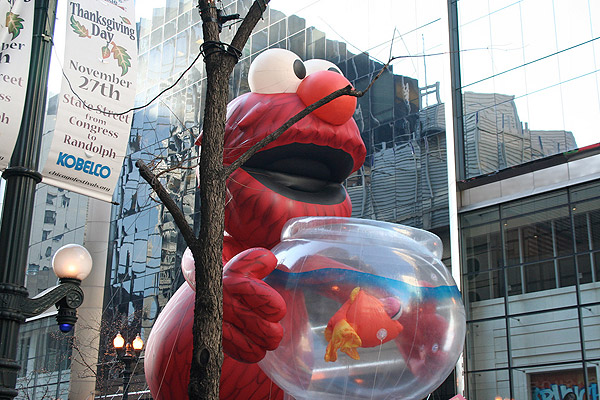
* A really fascinating article by Linda Lutton (WBEZ education reporter) and Catrin Einhorn (ex-WBEZ, now at the NYT) on the connection between Morton, Illinois—canned pumpkin capital of the world—and La Soledad, Michoacan, Mexico, which supplies Morton with most of its workers. It's a good introduction to the economy of immigration, and what it means for communities as much as people:
Ortega, who worked for six seasons in Morton in the 1980s, estimates that the pumpkin plant is responsible for some 35 percent of all the dollars that flow into this town. The first man from La Soledad to land a job at Libby's worked there in the early 1970s. After that "one brother comes, then another," says Jose Pimentel, who first made the trip in 1975. This has been a bad year for the calabaza workers–too much rain, too many days off. Workers who haven't already wired money home are coming back with just about $6,000 each. Even so, that's $400,000–to be conservative–that will find its way to La Soledad this month.
"The highway, the plaza, the church–all of it has been built with the help of the migrants. Where would we get that kind of money here?" says Ricardo Mora, a La Soledad native who works for Mexico's ministry of social development. The ministry oversees the "three for one" development programs that provide matching local, state, and federal government funds for projects launched by migrants, including Nuestra Senora de la Soledad. In Mexico, churches are considered property of the state and government funds can be used to construct them. The tab for this one: $325,000. Money from migrants has helped pave every road in town but one, build a fence around the school, and lay sewer lines. Residents who stay behind donate faenas–days of work. Ortega, who has helped collect $50,000 in Chicago and Peoria alone, is already thinking ahead to the next project: a town ambulance.
* Cliff Doerksen's essay on mince pie, one of my favorites, and something worth keeping in mind for next Thanksgiving:
Moreover, unlike apple pie or anything else on the American menu before or since, mince pie dominated in multiple categories. It was beloved as an entree, as dessert, and, in parts of New England, as breakfast. And although more popular in winter than summer, and absolutely mandatory at Thanksgiving and Christmas, mince pie was eaten year round, unconfined to the holiday ghetto it now shares with iffy ritual foods like eggnog, green bean casserole, and marshmallow candied yams.
Most remarkably, mince pie achieved and maintained its hegemony despite the fact that everyone—including those who loved it—agreed that it reliably caused indigestion, provoked nightmares, and commonly afflicted the overindulgent with disordered thinking, hallucinations, and sometimes death.
* Neil Irwin explains why Black Friday is not a good indicator of the Christmas shopping season or the economy:
In fact, sales over Thanksgiving weekend tell us virtually nothing about retail sales for the full holiday season—let alone anything meaningful about the economy as a whole. Paul Dales of Capital Economics analyzed the relationship between retail sales during the week of Thanksgiving against the overall change in retail sales for November through January. As the chart shows, the relationship is a very weak one, with dots all over the grid. But if there is any conclusion to draw at all, the relationship is actually negative! (That’s why the line is sloping downward).
In other words, strong sales results around Black Friday actually predict slightly weaker holiday sales overall. (Shhh. Don’t tell the people who lined up at Target last night that they aren’t actually bellweathers for the U.S. economy).
It's a very weak correlation, but it makes sense: people storming the ramparts for a handful of bargains, in the abstract, isn't a great bellwether for a strong economy.
* Me, on the very political origins of Thanksgiving as a national holiday (see also: the fact that Thanksgiving is on the fourth Thursday in November is a weird political compromise).
* Remember Black Wednesday? Me neither. I'm thankful for that.
* Laura Letinsky and leftovers as fine art.
* Perhaps somewhere like Petersburg, Illinois awaits us all.
Photograph: danxoneil (CC by 2.0)


